حراجناموجود
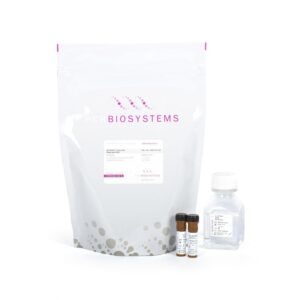
qPCRBIO Probe Mix Hi-ROX, PB20.22-01
2,136,000 تومان 1,780,000 تومان
HPV genotypes 14 High Risk Quant Real-TM , sacace-100 t
58,762,318 تومان 48,968,599 تومان
ناموجود
Sacace™ HPV Genotypes 14 Real-TM Quant NEW ver. 09.09.21 For in Vitro Diagnostic Use HPV Genotypes 14 Real-TM Quant HANDBOOK Real Time PCR Kit for quantitative detection and genotyping of Human Papillomavirus (16, 18, 31, 33, 35, 39, 45, 51, 52, 56, 58, 59, 66 and 68) REF V67-100FRT 100 Sacace™ HPV Genotypes 14 Real-TM Quant NEW ver. 09.09.21 NAME HPV Genotypes 14 Real-TM Quant INTRODUCTION Genital infection with HPV is one of the most common sexually transmitted diseases (STDs) of viral etiology worldwide (20% – 46% in different countries in sexually active young women). Cervical cancer is the second most common cancer in women worldwide, and a compelling body of clinical, epidemiological, molecular, and experimental evidence has established the etiological relationship between some sexually transmitted HPV genotypes and cervical neoplasia throughout the world. Based on the frequency of detection of HPV genotypes from different grades of Cervical Intraepithelial Neoplasia (CIN Grades I – III), HPV genotypes are subdivided into High-risk HPV types (16, 18, 31 and 45), Intermediate-risk types (33, 35, 39, 51, 52, 56, 58, 59, and 68), and Low-risk types (6, 11, 42-44). Several methods have been used to diagnose clinical or subclinical infection with HPVs including clinical observation, cytological screening by Pap smear, electron microscopy, immunocytochemistry, but these methods have some disadvantages such as non-standardization and subjectivity, insufficient sensitivity and low predictable value. The most perspective way of HPV diagnosis is a direct detection of DNA of the human papilloma virus of high carcinogenic risk by the polymerase chain reaction. While the value of the Pap smear in routine screening for cervical displasia is undisputed, it is now known that 99% of cases of cervical carcinoma are caused by infection with twelve genotypes of the human papilloma virus (HPV). Identification of these highrisk genotypes is very valuable in the management of cervical carcinoma, both as a prognostic indicator and as a secondary screening test where results of a Pap smear are inconclusive. Results from the combination of the Pap smear and the HPV DNA test can aid in determining the intervals for screening. The PCR-based methods have been used successfully for the detection and typing of genital HPV genotypes in clinical specimens such as cervical swabs or scrapes, cervicovaginal lavages, frozen biopsies and formalinfixed paraffin-embedded tissues. INTENDED USE kit HPV Genotypes 14 Real-TM Quant is an in vitro Real Time amplification test for quantitative or qualitative detection and genotyping of Human Papillomavirus (16, 18, 31, 33, 35, 39, 45, 51, 52, 56, 58, 59, 66, 68) in the urogenital swabs and biopsies. PRINCIPLE OF ASSAY kit HPV Genotypes 14 Real-TM Quant is based on two major processes: isolation of DNA from specimens and multiplex Real Time amplification of 4 PCR tubes for each sample. HPV Genotypes 14 Real-TM Quant detects the most widespread and oncogenic 14 genotypes of human papilloma virus with determination of clinical significance. Since the human papilloma virus is an intracellular agent, there is need to monitor the presence of cellular material in the sample, in order to avoid false-negative results. HPV Genotypes 14 RealTM Quant kit contains the internal control (human beta-globin gene), which allows to control the presence of cellular material in the sample. If the swab is not correctly prepared (high quantity of mucous or insufficient quantity of epithelial cells) the Internal Control will not be detected. It is known that the parameter of viral load has a prognostic value and the viral load less than 105 HPV genomic equivalents in the swab or 103 genomic equivalents for 105 cells is considered as insignificant and indicates the presence of transitory infection, however such level of load may have a value only in cases of treatment monitoring. Viral load of more than 105 genomic equivalents for 105 cells is considered to be important with high significance and indicates the existence of dysplastic changes or high risk of their occurrence. Quantitative detection of viral load allows to evaluate the character of the infection and to make a forecast concerning the stage of the disease. Sacace™ HPV Genotypes 14 Real-TM Quant NEW ver. 09.09.21 Fluorescence channel FAM HEX/JOE ROX Cy5 Reaction Mix Amplification product PCR-Mix HPV1 HPV genotype 16 HPV genotype 31 HPV genotype 18 Human β-globin gene DNA (IC Glob) PCR-Mix HPV2 HPV genotype 39 HPV genotype 45 HPV genotype 59 Human β-globin gene DNA (IC Glob) PCR-Mix HPV3 HPV genotype 33 HPV genotype 35 HPV genotype 68 HPV genotype 56 PCR-Mix HPV4 HPV genotype 58 HPV genotype 52 HPV genotype 66 HPV genotype 51 Reaction Mix Target gene PCR-Mix HPV1 E6 Gene E6 Gene E7 Gene β-globin gene PCR-Mix HPV2 E7 Gene E6 Gene E6 Gene β-globin gene PCR-Mix HPV3 E6 Gene E6/E7 Gene E6 Gene E1 Gene PCR-Mix HPV4 E7 Gene E7 Gene E6 Gene E7 Gene MATERIALS PROVIDED “HPV Genotypes 14 Real-TM Quant ”: PCR-mix HPV1, 1 x 1,2 ml PCR-mix HPV2, 1 x 1,2 ml PCR-mix HPV3, 1 x 1,2 ml PCR-mix HPV4, 1 x 1,2 ml PCR- buffer-FRT, 4 x 0,6 ml Negative Control*, 2 x 1,2 ml; Standards: K1 HPV Genotype, 4 x 0,2 ml ** K2 HPV Genotype, 4 x 0,2 ml ** Contains reagents for 110 tests. * must be used in the isolation procedure as Negative Control of Extraction. ** K1 and K2 standards concentration are printed on the DataCard supplied inside the kit MATERIALS REQUIRED BUT NOT PROVIDED Zone 1: sample preparation: Biological cabinet Desktop microcentrifuge for “eppendorf” type tubes 65°C ± 2°C dry heat block Vortex mixer Pipettes with sterile, RNase-free filters tips 1,5 ml polypropylene sterile tubes Disposable gloves, powderless Tube racks Zone 2: Real Time amplification: Real Time Thermalcycler PCR Tubes Workstation Pipettes with sterile, RNase-free filters tips Tube racks Sacace™ HPV Genotypes 14 Real-TM Quant NEW ver. 09.09.21 WARNINGS AND PRECAUTIONS In Vitro Diagnostic Medical Device For In Vitro Diagnostic Use Only The user should always pay attention to the following: Use sterile pipette tips with aerosol barriers and use new tip for every procedure. Store extracted positive material (samples, controls and amplicons) away from all other reagents and add it to the reaction mix in a separate area. Thaw all components thoroughly at room temperature before starting an assay. When thawed, mix the components and centrifuge briefly. Use disposable gloves, laboratory coats and eye protection when handling specimens and reagents. Thoroughly wash hands afterwards. Do not eat, drink, smoke, apply cosmetics, or handle contact lenses in laboratory work areas. Do not use a kit after its expiration date. Dispose of all specimens and unused reagents in accordance with local authorities’ regulations. Specimens should be considered potentially infectious and handled in a biological cabinet in accordance with appropriate biosafety practices. Clean and disinfect all sample or reagent spills using a disinfectant such as 0.5% sodium hypochlorite, or other suitable disinfectant. Avoid sample or reagent contact with the skin, eyes, and mucous membranes. If skin, eyes, or mucous membranes come into contact, rinse immediately with water and seek medical advice immediately. Material Safety Data Sheets (MSDS) are available on request. Use of this product should be limited to personnel trained in the techniques of DNA amplification. The laboratory process must be one-directional, it should begin in the Extraction Area and then move to the Amplification and Detection Areas. Do not return samples, equipment and reagents to the area in which the previous step was performed. STORAGE INSTRUCTIONS HPV Genotypes 14 Real-TM Quant must be stored at -16°C. The kit can be shipped at 2-8°C for 3-4 days but should be stored at -16°C or below immediately on receipt. STABILITY HPV Genotypes 14 Real-TM Quant is stable up to the expiration date indicated on the kit label. The product will maintain performance through the control date printed on the label. Exposure to light, heat or humidity may affect the shelf life of some of the kit components and should be avoided. Repeated thawing and freezing of these reagents should be avoided, as this may reduce the sensitivity. Components stored under conditions other than those stated on the labels may not perform properly and may adversely affect the assay results. NOTE: PCR-mix HPV reagents are to be kept away from the light. Sacace™ HPV Genotypes 14 Real-TM Quant NEW ver. 09.09.21 SAMPLE COLLECTION, STORAGE AND TRANSPORT Clinical material: For women: Cervical swabs: Remove excess mucus from the cervical os and surrounding ectocervix using a cotton or polyester swab. Discard this swab. Insert the Sampling Cervical Brush 1.0-1.5 centimeters into the cervical os until the largest bristles touch the ectocervix. Do not insert brush completely into the cervical canal. Rotate brush 3 full turns in a counterclockwise direction, remove from the canal. Insert brush into the nuclease-free 2,0 ml tube with 0,5 mL of Transport medium with mucolytic agent (REF R12Stab, Sacace). Vigorously agitate brush in medium for 15-20 sec. Snap off shaft at scored line, leaving brush end inside tube. Fluid Cytology (Thinprep PreservCyt®, CytoScreen™, BD SurePath™): Place cervical epithelial swab (endocervix) and superficial cervical swab (exocervix) into the tube with transport-fixation media. Working part of the probe is to be broken off and left in the tube with transport media. Biopsy material from mucosa For men: Place the urethral epithelial swab obtained by universal probe, into the 2.0 ml volume tube with 0.5 ml of Transport media with mucolytic agent. It is recommended to process samples immediately after collection. Transportation of clinical specimens must comply with country, federal, state and local regulations for the transport of etiologic agents. DNA ISOLATION Any commercial RNA/DNA isolation kit, if IVD-CE validated for the specimen types indicated herein at the “SAMPLE COLLECTION, STORAGE AND TRANSPORT” paragraph, could be used. Sacace Biotechnologies recommends to use one of the following kits: Material DNA extraction kit REF Cervical Swabs SaMag STD DNA Extraction kit (to be used with automatic extraction system SaMag-12/24) SM007 DNA-sorb-A K-1-1/A/100 Fluid Cytology SaMag STD DNA Extraction kit (to be used with automatic extraction system SaMag-12/24) SM007 DNA-sorb-D K-1-8/100 Biopsy material from mucosa DNA-sorb-C K-1-6 Please carry out DNA extraction according to the manufacturer’s instruction. Sacace™ HPV Genotypes 14 Real-TM Quant NEW ver. 09.09.21 Protocol (total vol: 25 µl, including 10 µl of DNA sample): 1. Vortex all the reagent tubes and then centrifuge briefly. 2. Prepare required quantity of PCR tubes/strips according to the number of clinical samples and controls; 4 tubes for each clinical sample (or half strip) and 4 tubes for each included control (or half strip); 3. Prepare 4 tubes of Reaction Mix by adding into each tube the reagents as indicated below: Reaction Mix 1: 10,0 µl*(N+1) of PCR-mix HPV1 + 5,0 µl*(N+1) of PCR-buffer-FRT; Reaction Mix 2: 10,0 µl*(N+1) of PCR-mix HPV2 + 5,0 µl*(N+1) of PCR-buffer-FRT; Reaction Mix 3: 10,0 µl*(N+1) of PCR-mix HPV3 + 5,0 µl*(N+1) of PCR-buffer-FRT; Reaction Mix 4: 10,0 µl*(N+1) of PCR-mix HPV4 + 5,0 µl*(N+1) of PCR-buffer-FRT. 4. Vortex briefly all the prepared Reaction Mixes and spin down shortly; 5. Pipette 15 μl of Reaction Mix and 10 µl of DNA sample into each correspondent tube (four tubes for each clinical sample and four tubes for each control) according with the scheme below: Table 1. Sample distribution for plate type instruments :SaCycler-96™ (Sacace), CFX/iQ5™ (BioRad); Mx3005P™ (Agilent), ABI® 7500 Real Time PCR (Applied Biosystems). For rotor type instruments like Rotor-Gene™ 3000/6000/Q (Corbett Research, Qiagen) 0,1 ml strip tubes & caps are recommended. ATTENTION! Don’t store unused Reaction Mixes. For Qualitative analysis: a) add 10 μl of K2 HPV Genotype for Positive Control of PCR – add K2 HPV Genotype in four PCR tubes containing different Reaction Mix. b) add 10 μl of extracted Negative Control for Negative Control of Extraction – add extracted Negative Control in four PCR tubes containing different Reaction Mix. For Quantitative analysis: a) add 10 μl of K1 HPV Genotype for Calibrator 1 sample – add K1 HPV Genotype in four PCR tubes containing different Reaction Mix. b) add 10 μl of K2 HPV Genotype for Calibrator 2 sample – add K2 HPV Genotype in four PCR tubes containing different Reaction Mix. c) add 10 μl of extracted Negative Control for Negative Control of Extraction – add extracted Negative Control in four PCR tubes containing different Reaction Mix. 4 tubes strip for any clinical sample Strip for negative control PCR-mix HPV1 (Reaction Mix 1) PCR-mix HPV2 (Reaction Mix 2) PCR-mix HPV3 (Reaction Mix 3) PCR-mix HPV4 (Reaction Mix 4) Strips for standards (K1, K2) add K1 HPV Genotype into all 4 tubes add K2 HPV Genotype into all 4 tubes 1 3 5 7 9 11 13 15 17 2 4 6 8 10 12 14 16 18 Sacace™ HPV Genotypes 14 Real-TM Quant NEW ver. 09.09.21 Amplification 1. Create a temperature profile on your instrument as follows: Rotor-type Instruments1 Plate- or modular type Instruments2 Step Тemperature, °С Time Repeats Тemperature, °С Time Repeats 1 95 15 min 1 95 15 min 1 2 95 5 s 5 95 5 s 60 20 s 60 20 s 5 72 15 s 72 15 s 3 95 5 s 40 95 5 s 60 40 20 s fluorescent signal detection* 60 30 s fluorescent signal detection* 72 15 s 72 15 s 1 For example Rotor-Gene™ 3000/6000/Q (Corbett Research, Qiagen) 2 For example, SaCycler-96™ (Sacace), CFX/iQ5™ (BioRad); Mx3005P™ (Agilent), ABI® 7500 Real Time PCR (Applied Biosystems) * detection on Fam (Green), Joe (Yellow)/Hex, Rox (Orange) and Cy5 (Red) INSTRUMENT SETTINGS Rotor-type instruments Channel Calibrate/Gain Optimisation… Threshold More Settings/ Outlier Removal Slope Correct FAM/Green from 5 Fl to 10 Fl 0.03 15 % On JOE/Yellow from 5 Fl to 10 Fl 0.03 15 % On Rox (Orange) from 5 Fl to 10 Fl 0.03 15 % On Cy5 (Red) from 5 Fl to 10 Fl 0.03 10 % On Plate-type instruments The threshold line should cross only sigmoid curves of signal accumulation of positive samples and should not cross the baseline; otherwise, the threshold level should be raised. Set the threshold at a level where fluorescence curves are linear and do not cross curves of the negative samples, at a level of 10-20% of the maximum fluorescence obtained for the K2 HPV Genotype control in the last amplification cycle. Sacace™ HPV Genotypes 14 Real-TM Quant NEW ver. 09.09.21 Data Analysis & Results Interpretation: Qualitative analysis: Signal in a tube in the channel is considered to be positive, if corresponding fluorescence accumulation curves cross the threshold line. The signal is characterized by the cycle (threshold Ct) corresponding to the intersection of the fluorescence curve with the threshold line. The software of analysis determines the Ct value. Table 4. HPV genotypes detection Fluorescence channel FAM HEX/JOE ROX Cy5 Reaction Mix Amplification product PCR-Mix HPV1 HPV genotype 16 HPV genotype 31 HPV genotype 18 Human β-globin gene DNA (IC Glob) PCR-Mix HPV2 HPV genotype 39 HPV genotype 45 HPV genotype 59 Human β-globin gene DNA (IC Glob) PCR-Mix HPV3 HPV genotype 33 HPV genotype 35 HPV genotype 68 HPV genotype 56 PCR-Mix HPV4 HPV genotype 58 HPV genotype 52 HPV genotype 66 HPV genotype 51 Principle of qualitative analysis interpretation is the following: – DNA of HPV genotypes 16, 39, 33, 58 is detected if the Ct value determined in the channel FAM does not exceed the boundary Ct value. Moreover, the fluorescence curve of the sample should cross the threshold line in the area of typical exponential growth of fluorescence. – DNA of HPV genotypes 31, 45, 35, 52 is detected if the Ct value determined in the channel JOE does not exceed the boundary Ct value. Moreover, the fluorescence curve of the sample should cross the threshold line in the area of typical exponential growth of fluorescence. – DNA of HPV genotypes 18, 59, 68, 66 is detected if the Ct value determined in the channel ROX does not exceed the boundary Ct value. Moreover, the fluorescence curve of the sample should cross the threshold line in the area of typical exponential growth of fluorescence. – DNA of HPV genotypes 56, 51 is detected if the Ct value determined in the channel Cy5 (in the tubes with PCR-mix HPV 3 and 4, respectively) does not exceed the boundary Ct value. Moreover, the fluorescence curve of the sample should cross the threshold line in the area of typical exponential growth of fluorescence. – DNA of HPV is not detected in a sample if the Ct value is not determined (fluorescence curve does not cross the threshold line or the Ct value exceed the boundary value) in the channels FAM, JOE, ROX, and also Cy5 (in the tubes with PCR-mix HPV 3 and 4), whereas the Ct value determined in the channel Cy5 fluorophore (in the tubes with PCR-mix HPV 1 and 2) does not exceed the boundary value. – The result is invalid if the Ct value is not determined (absent) or exceed the boundary value in the channel FAM, JOE, ROX, and also Cy5 (in the tubes with PCR-mix HPV 3 and 4), and the Ct value in the channel Cy5 (in the tubes with PCR-mix HPV 1 and 2) is not determined (absent). In such cases, the PCR analysis should be repeated starting from the DNA extraction stage. Note: boundary Ct values are printed in the DataCard supplied inside the kit Quantitative analysis: For quantitative analysis, the calibration curve is automatically plotted on the basis of these values, and human DNA and HPV DNA concentrations are calculated. To obtain the final result, HPV DNA concentration is normalized to the number of human genome equivalents according to the formula (see program Microsoft® Excel “HPV Genotype 14 Real-TM.xls”): Sacace™ HPV Genotypes 14 Real-TM Quant NEW ver. 09.09.21 To automatically calculate such values please refer to the provided file Microsoft Excel “HPV Genotype 14 RealTM.xls” and enclosed instructions. Clinical explanation of final values obtained is explained as follows: Result log (HPV DNA in 100.000 cells) Interpretation < 3 Clinically insignificant (Insignificance) 3-5 Clinically important. Present risk of cervical dysplasia (Significance) > 5 Clinically very important. High risk of cervical dysplasia (Heightened) HPV DNA not detected The Ct value for HPV DNA is absent and the concentration of IC Glob is greater than 1х103 copies/reaction. The result is HPV DNA is not detected Insufficient human DNA for reliable analysis DNA concentration of IC Glob is less than 1х103 copies/reaction (the value obtained for sample in the channel for Cy5 fluorophore in the tubes with PCR-mixes HPV 1 and 2). It is necessary to repeat the PCR analysis of this sample starting from DNA extraction stage. If the amount of biological material is insufficient, it is recommended to repeat biological material sampling and PCR-analysis Invalid The Ct value in the channel Cy5 fluorophore in the tubes with PCR-mixes HPV 1 and 2 (human DNA) is absent or determined greater than the boundary Ct value, while the Ct value is not determined (absent) or greater than the boundary Ct value in channels FAM, JOE, ROX, as well as Cy5 (in the tubes with PCR-mixes HPV 3 and 4). It is necessary to repeat the PCR analysis of this sample starting from DNA extraction stage. If IC Glob DNA is absent in the test sample, it is recommended to repeat biological material sampling and PCR-analysis The reaction is valid if Negative control have no signal in all channels (FAM/Green, JOE/Yellow/HEX, ROX/Orange, Cy5/Red); All calibrators have signals in all channels (FAM/Green, JOE/Yellow/HEX, ROX/Orange, Cy5/Red); The correlation coefficient for calibration curves for all channels is not less than 0.98. The result of HPV DNA detection of a given sample is considered to be: – Negative, if the signal of the Internal Control (IC; Cy5/Red channel) is detected in 2 first tubes for the sample and the quantity of human DNA per reaction exceeds 103 copies. – Positive, if a signal in the FAM/Green, JOE/Yellow/HEX, ROX/Orange, Cy5/Red channel is detected at least in one of the 4 tubes (except channel Cy5/Red in the mixes PCR mix HPV1 and HPV2 which are reserved for human beta-globin gene detection). Genotyping of HPV : – On the FAM/Green channel are detected 16,39,33,58 HPV genotypes, – On the JOE/Yellow/HEX channel are detected 31,45,35,52 genotypes, – On the ROX/Orange channel are detected 18,59,68,66 genotypes, – On the Cy5/Red channel genotypes 56 and 51 (in the tubes with PCR-mix HPV3 and PCR-mix HPV4). Sacace™ HPV Genotypes 14 Real-TM Quant NEW ver. 09.09.21 Example Fig. 1 Channel Cy5 – internal control (PCR-mix HPV1 and PCR-mix HPV2) Fig. 2 Channel Fam Fig. 3 Channel Joe Fig. 4 Channel Rox Fig. 5 The table results Quant.Results date Matrix for comparison Reaction Ct-Results Results NN Sample Fam Joe Rox Cy5 Fam Ct Joe Ct Rox Ct Cy5 Ct Name 1 9868 16 31 18 IC 12 9868 39 45 59 IC 12 12 45 9868 33 35 68 56 9868 58 52 66 51 2 DB59 16 31 18 IC 13 13 16 DB59 39 45 59 IC 12 15 29 13 39,45,59 DB59 33 35 68 56 20 21 35,68 DB59 58 52 66 51 12 52 3 K+ 16 31 18 IC 21 21 21 21 OK K+ 39 45 59 IC 21 21 21 21 OK K+ 33 35 68 56 22 20 20 21 OK K+ 58 52 66 51 22 21 23 20 OK 4 k- 16 31 18 IC OK k- 39 45 59 IC OK k- 33 35 68 56 OK k- 58 52 66 51 OK Fig.6 Program Microsoft ® Excel “HPV Genotype 14 Real-TM.xls” NOTE: For automatic quantitative analysis please refer to the provided file Microsoft Excel “HPV Genotype 14 Real-TM.xls” and enclosed instructions. Sacace™ HPV Genotypes 14 Real-TM Quant NEW ver. 09.09.21 PERFORMANCE CHARACTERISTICS Analytical specificity The analytical specificity of HPV Genotypes 14 Real-TM Quant kit is ensured by the selection of specific primers and probes as well as stringent reaction conditions. The primers and probes have been checked for possible homologies to all sequences published in gene banks by sequence comparison analysis. The potential cross-reactivity of the kit HPV Genotypes 14 Real-TM Quant was tested against the group control. It was not observed any cross-reactivity with other pathogens: Neisseria gonorrhoeae, Chlamydia trachomatis, Gardnerella vaginalis, Mycoplasma genitalium, Trichomonas vaginalis, Atopobium vaginae, Mycoplasma hominis, Ureaplasma parvum, Streptococcus agalactiae, Streptococcus pyogenes, Candida spp., CMV (cytomegalovirus), EBV (Epstein-Barr virus), VZV (varicella-zoster virus), HSV I, HSV II (herpes simplex virus types 1 and 2), Human herpesvirus 6 (herpes virus type 6), DNA of HPV relative to the types of low and uncertain risk, particularly, genotypes 6, 11, 67, 70, 84, 81, 82, 62, 72, 73. The specificity of testing was proved by sequencing of amplification fragments being detected. The specificity of the kit HPV Genotypes 14 Real-TM Quant was 100%. Analytical sensitivity The kit HPV Genotypes 14 Real-TM Quant allows to detect Human Papillomavirus DNA in 100% of the tests with a sensitivity of not less than 1000 copies/ml. The detection was carried out on the control standard and its dilutions by negative sample. Test material Transport medium Nucleic acid extraction kit Analytical sensitivity, copies/ml Linear range, copies/ml Vaginal swab, scrape from the cervical mucous membrane (ectocervix and endocervix) Transport Medium with Mucolytic Agent, Transport Medium for Swabs, Digene transport medium DNA-sorb-A 1х103 3х103 – 1х108 Scrape from the cervical mucous membrane (ectocervix and endocervix) Transport medium for liquidbased cytology DNA-sorb-D 1х103 3х103 – 1х108 Reproducibility, repeatability and accuracy Reproducibility HPV genotype Initial concentration value, copies/ml Number of repeats Average concentration value, lg Standard deviation (SD) Coefficient of variation (CV), % 16 from 5х103 to 1х104 8 3.56 0.03 0.82 18 8 3.76 0.05 1.20 31 8 3.70 0.08 2.19 33 8 3.91 0.06 1.57 35 8 4.03 0.06 1.45 39 8 3.59 0.10 2.77 45 8 3.78 0.08 2.23 51 8 3.70 0.07 1.78 52 8 3.75 0.11 2.89 56 8 3.82 0.07 1.91 58 8 3.76 0.06 1.52 59 8 3.88 0.05 1.25 66 8 3.70 0.11 2.93 68 8 3.72 0.09 2.34 16 from 5х104 to 1х105 8 5.11 0.07 1.39 18 8 4.89 0.07 1.47 31 8 4.92 0.08 1.71 33 8 4.73 0.10 2.21 35 8 4.57 0.10 2.28 39 8 4.68 0.07 1.55 45 8 4.58 0.10 2.11 51 8 5.06 0.05 0.97 52 8 4.56 0.09 1.99 56 8 4.66 0.17 3.57 58 8 4.62 0.08 1.76 59 8 4.55 0.09 2.06 66 8 4.73 0.07 1.41 68 8 4.89 0.07 1.48 16 greater than 8 7.41 0.08 1.14 NOTE: Reproducibility and repeatability were determined by testing dilutions of quality control sample (QCS) containing HPV DNA (genotypes 16, 18, 31, 33, 35, 39, 45, 51, 52, 56, 58, 59, 66, 68) with three concentration ranges (from 5х103 to 1х104 , from 5х104 to 1х105 , greater than 5х105 copies/ml) in the biological material which did not contain the HPV DNA of any other genotypes nor the DNA of any other pathogen. Sacace™ HPV Genotypes 14 Real-TM Quant NEW ver. 09.09.21 Repeatability HPV genotype Initial concentration value, copies/ml Total number of repeats Average concentration value, lg Standard deviation (SD) Coefficient of variation (CV), % 16 from 5х103 to 1х104 16 3.62 0.09 2.43 18 16 3.85 0.11 2.93 31 16 3.74 0.07 1.96 33 16 3.91 0.05 1.34 35 16 4.03 0.06 1.55 39 16 3.62 0.09 2.45 45 16 3.74 0.08 2.23 51 16 3.68 0.09 2.56 52 16 3.77 0.08 2.19 56 16 3.80 0.08 2.07 58 16 3.79 0.05 1.42 59 16 3.84 0.08 2.12 66 16 3.69 0.08 2.30 68 16 3.76 0.10 2.67 16 from 5х104 to 1х105 16 5.22 0.13 2.45 18 16 5.12 0.25 4.81 31 16 5.20 0.30 5.71 33 16 4.90 0.20 4.02 35 16 4.70 0.17 3.54 39 16 4.84 0.18 3.63 45 16 4.71 0.16 3.36 51 16 5.07 0.09 1.77 52 16 4.59 0.11 2.47 56 16 4.73 0.17 3.50 58 16 4.69 0.15 3.10 59 16 4.68 0.16 3.42 66 16 4.85 0.15 3.07 68 16 4.94 0.10 2.07 16 greater than 5х105 16 7.47 0.09 1.24 18 16 7.44 0.09 1.21 31 16 7.50 0.13 1.78 33 16 7.30 0.07 0.92 35 16 7.15 0.05 0.64 39 16 7.31 0.08 1.11 45 16 7.16 0.07 0.97 51 16 7.26 0.09 1.28 52 16 7.08 0.07 1.04 56 16 7.34 0.06 0.78 58 16 7.26 0.10 1.32 59 16 7.03 0.06 0.88 66 16 6.92 0.06 0.94 68 16 7.35 0.04 0.58 HPV genotype Initial concentration value, copies/ml Number of repeats Average concentration value, lg Standard deviation (SD) Coefficient of variation (CV), % 18 5х105 8 7.37 0.03 0.41 31 8 7.39 0.08 1.02 33 8 7.28 0.06 0.80 35 8 7.16 0.05 0.68 39 8 7.25 0.07 0.92 45 8 7.20 0.06 0.80 51 8 7.29 0.08 1.12 52 8 7.09 0.08 1.09 56 8 7.31 0.06 0.76 58 8 7.24 0.06 0.86 59 8 7.25 0.04 0.53 66 8 7.24 0.05 0.71 68 8 7.28 0.05 0.66 Sacace™ HPV Genotypes 14 Real-TM Quant NEW ver. 09.09.21 Accuracy HPV genotype Number of repeats Average value of measurement, lg Specified value, lg Bias (B), % 16 32 5.20 5.00 4.00 18 32 5.15 5.00 3.00 31 32 5.09 5.00 1.80 33 32 4.92 5.00 1.60 35 32 4.72 5.00 5.60 39 32 4.87 5.00 2.60 45 32 4.72 5.00 5.60 51 32 5.05 5.00 1.00 52 32 4.70 5.00 6.00 56 32 4.79 5.00 4.20 58 32 4.81 5.00 3.80 59 32 4.80 5.00 4.00 66 32 4.69 5.00 6.20 68 32 4.98 5.00 0.40 Target region: E6, E7, E1 Fluorescence channel FAM HEX/JOE ROX Cy5 Reaction Mix Target gene PCR-Mix HPV1 E6 Gene E6 Gene E7 Gene β-globin gene PCR-Mix HPV2 E7 Gene E6 Gene E6 Gene β-globin gene PCR-Mix HPV3 E6 Gene E6/E7 Gene E6 Gene E1 Gene PCR-Mix HPV4 E7 Gene E7 Gene E6 Gene E7 Gene NOTE: Accuracy was determined by testing the QCS with the concentration of 1х105 copies/ml. Sacace™ HPV Genotypes 14 Real-TM Quant NEW ver. 09.09.21 KEY TO SYMBOLS USED * SaCycler™ is a registered trademark of Sacace Biotechnologies * CFX™ and iQ5™ are registered trademarks of Bio-Rad Laboratories * Rotor-Gene™ is a registered trademark of Qiagen * MX3005P® is a registered trademark of Agilent Technologies * ABI® is a registered trademark of Applied Biosystems Sacace Biotechnologies Srl via Scalabrini, 44 – 22100 – Como – Italy Tel +390314892927 Fax +390314492493 mail: info@sacace.com web: www.sacace.com List Number Caution! Lot Number Contains sufficient for tests For in Vitro Diagnostic Use Version Store at NCA Negative Control of Amplification Manufacturer C– Negative control of Extraction Consult instructions for use C+ Positive Control of Amplification Expiration Date IC Internal Control
حمل و نقل کالا
درخواست محصول
.فقط مشتریانی که این محصول را خریداری کرده اند و وارد سیستم شده اند میتوانند برای این محصول دیدگاه(نظر) ارسال کنند.
محصولات پیشنهادی
Sinapure DNA (whole blood, serum and plasma)-PR881612-EX6001
امتیاز 0 از 5



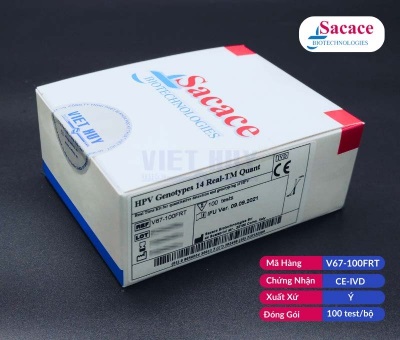
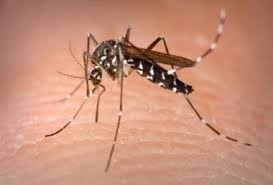

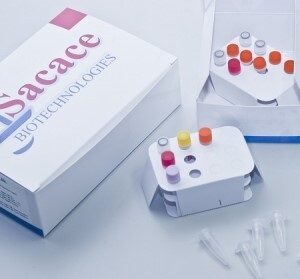



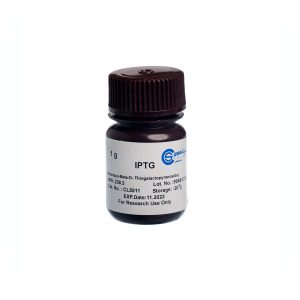
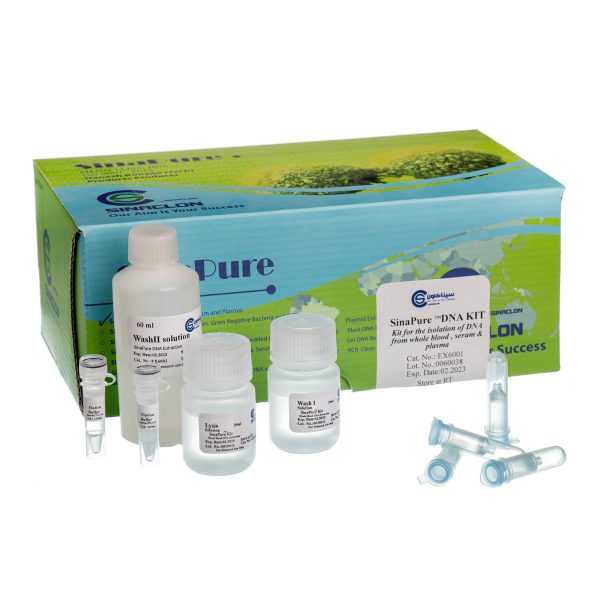
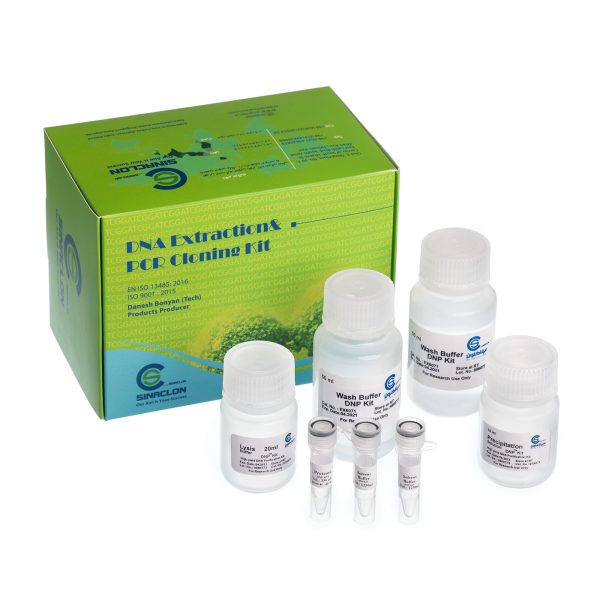
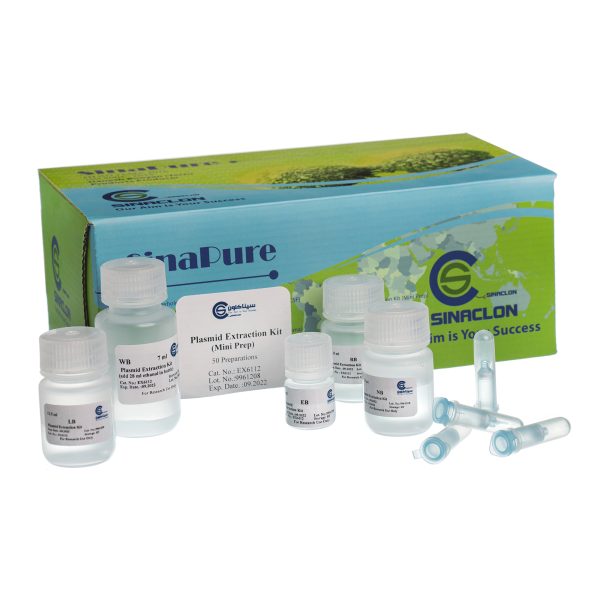
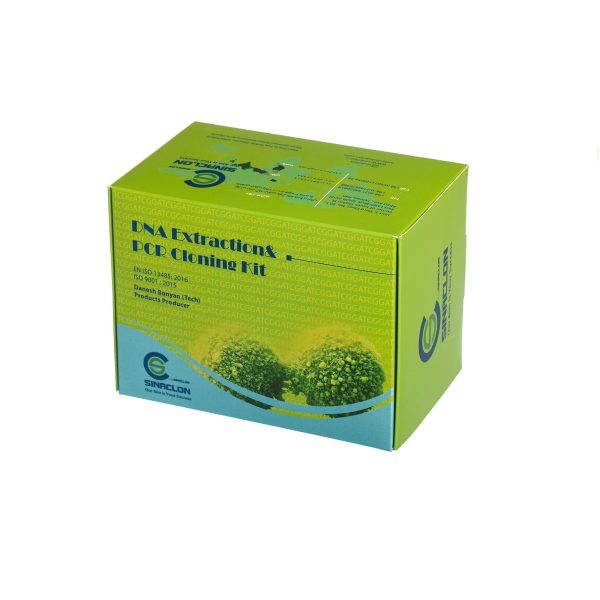


نقد و بررسیها
هنوز بررسیای ثبت نشده است.